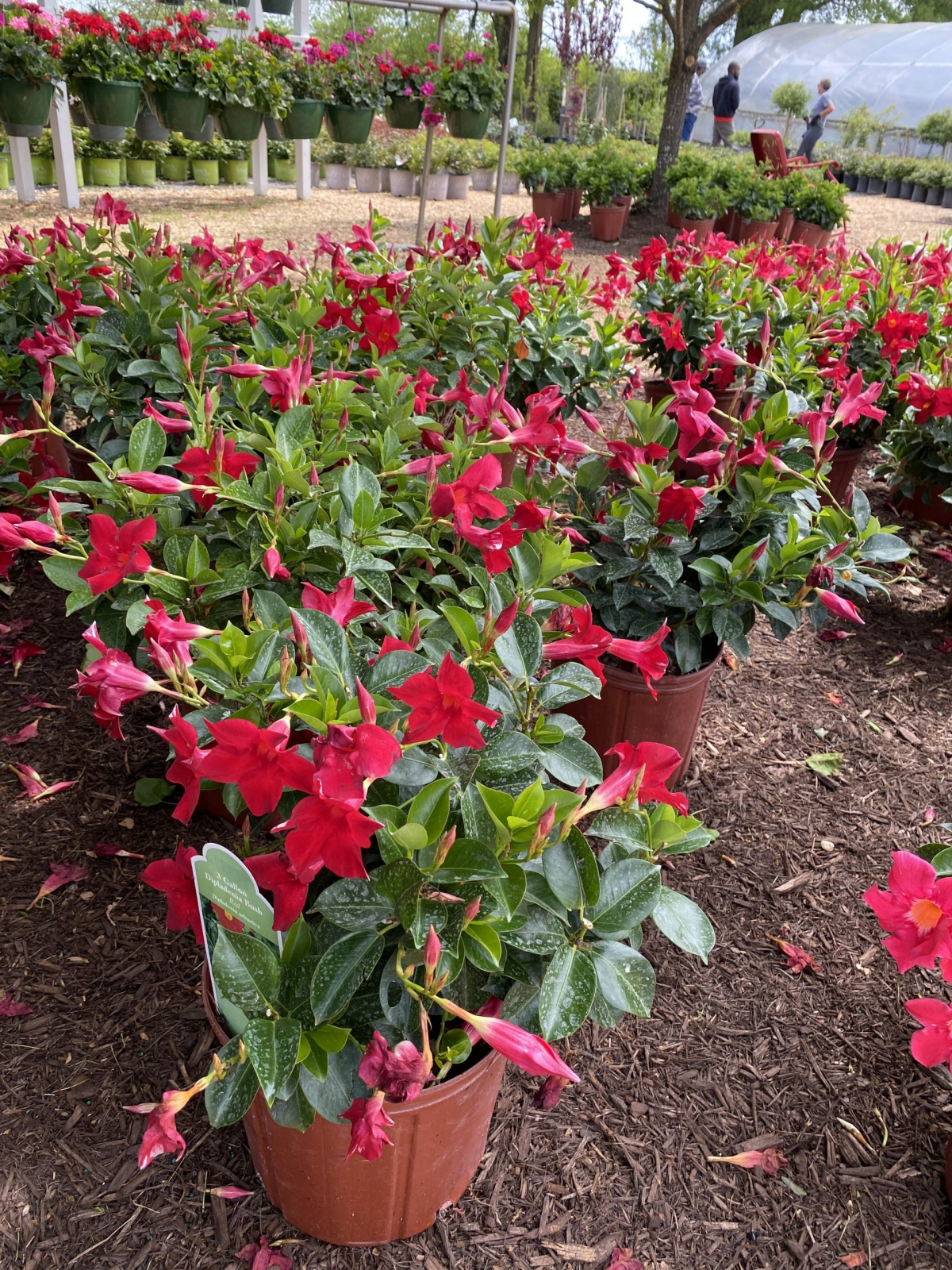Dipladenia: Your Guide to Growing & Caring for this Lush Plant
Draped in opulent blossoms and characterized by unrivaled grace, Dipladenia, with its exotic allure, has enthralled gardening enthusiasts and landscape connoisseurs alike. If you’re seeking to elevate your garden aesthetics with a touch of elegance, look no further than Dipladenia—a tropical gem that exudes both charm and sophistication. In the realm of horticulture, few plants rival the exquisite Dipladenia when it comes to sheer beauty and enchantment. Its botanical name, Mandevilla splendens, aptly captures the essence of this floral wonder. In this comprehensive guide, we will embark on a journey to unlock the secrets of cultivating and caring for this […]

Draped in opulent blossoms and characterized by unrivaled grace, Dipladenia, with its exotic allure, has enthralled gardening enthusiasts and landscape connoisseurs alike. If you’re seeking to elevate your garden aesthetics with a touch of elegance, look no further than Dipladenia—a tropical gem that exudes both charm and sophistication. In the realm of horticulture, few plants rival the exquisite Dipladenia when it comes to sheer beauty and enchantment. Its botanical name, Mandevilla splendens, aptly captures the essence of this floral wonder. In this comprehensive guide, we will embark on a journey to unlock the secrets of cultivating and caring for this garden jewel, ensuring it thrives in your outdoor haven.
Let’s discover the secrets to cultivating lush Dipladenia blooms!
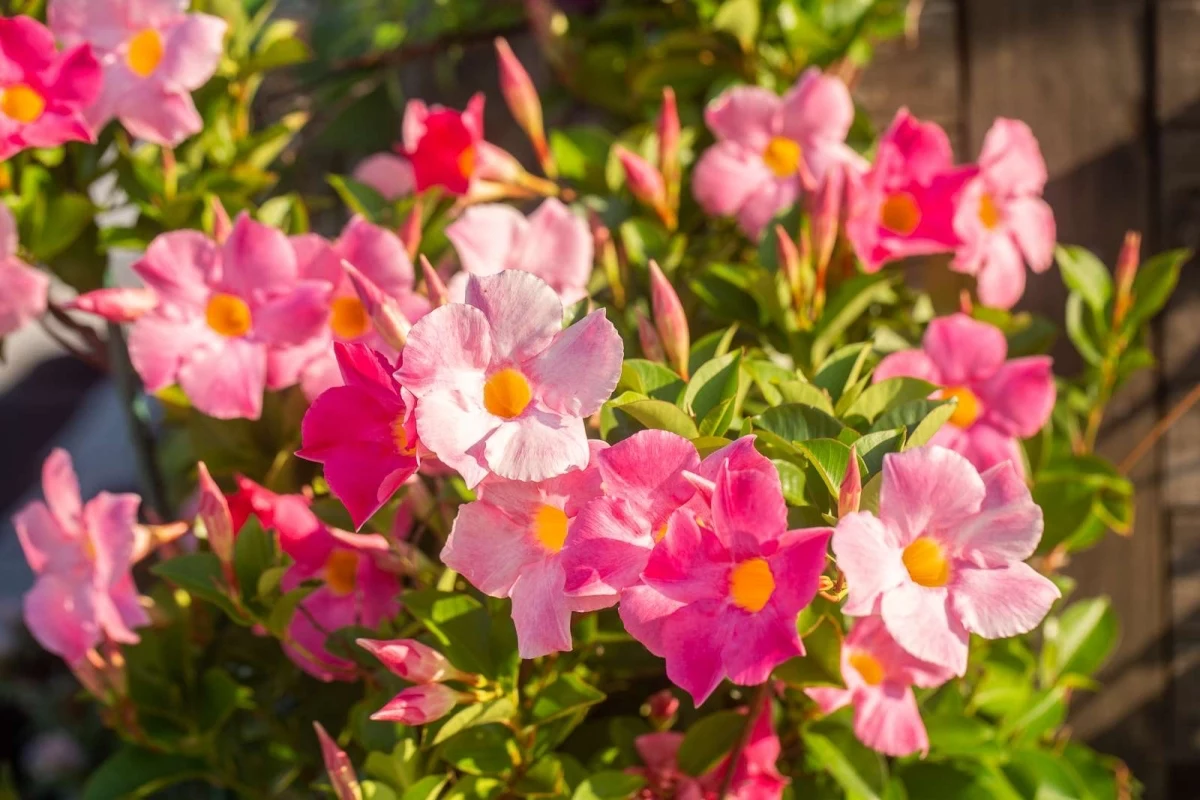
What is Dipladenia?
Dipladenia, often referred to as the “epitome of tropical elegance,” is a botanical marvel that hails from the lush landscapes of South America. It graces gardens with its evergreen foliage and exuberant trumpet-shaped blooms. The glossy, deep green leaves of Dipladenia serve as a luxurious backdrop to the stunning array of flowers that festoon its cascading vines. Each Dipladenia plant is a testament to nature’s artistry, a masterpiece of greenery and color that captures the essence of a tropical paradise. Its vibrant blossoms come in various shades, from vivid pinks and reds to soft whites and creamy yellows, making it a versatile addition to any garden or outdoor space. Beyond its aesthetic allure, Dipladenia has an enduring quality that sets it apart in the world of ornamental plants. It is revered for its capacity to thrive in warm and sunny environments, creating a lively and vivacious atmosphere wherever it’s planted.
A botanical marvel that hails from the lush landscapes of South America
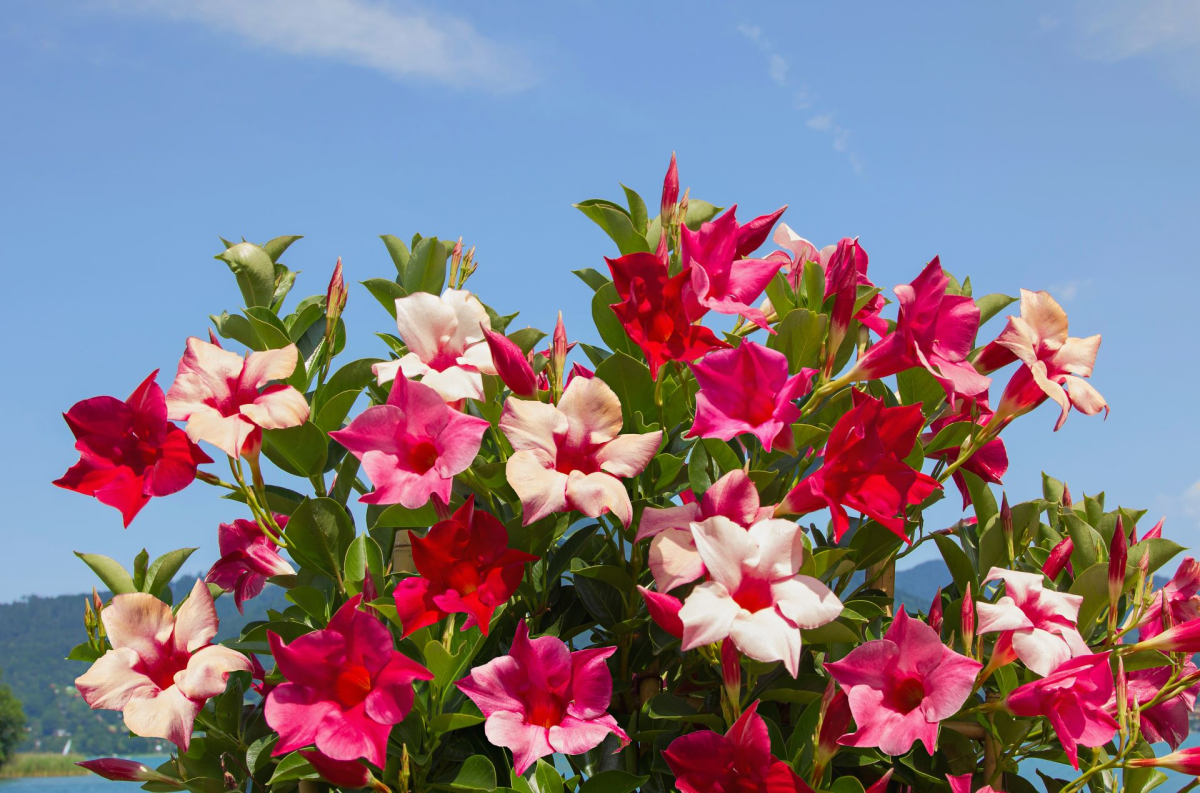
Varieties of Dipladenia
Diversity in Beauty
When it comes to Dipladenia, the choices are as diverse as your garden aspirations. This plant boasts a kaleidoscope of varieties, each with its own unique charm and personality. Whether you’re envisioning a vibrant tapestry of colors or a single, elegant statement piece in your garden, Dipladenia offers a multitude of options. One of the classic varieties is Dipladenia sanderi, known for its timeless beauty and dependable performance. Its abundant pink or red blossoms add a touch of sophistication to any landscape. On the other end of the spectrum lies the bold and brilliant Dipladenia Bella, which boasts large, fiery red blooms that command attention. For those seeking a more subtle and delicate palette, Dipladenia White Butterfly is an excellent choice. Its pristine white flowers evoke a sense of serenity and purity. Whatever your garden’s theme or color scheme, there’s a Dipladenia variety to complement it, ensuring your outdoor space becomes a canvas of natural beauty.
Dipladenia offers a multitude of options for your garden

Growing Dipladenia
Selecting the Perfect Spot
Creating the ideal environment for Dipladenia is the first step towards ensuring its prosperity and longevity. This plant is a sun worshiper, thriving in locations that receive ample sunlight. Ideally, choose a spot that welcomes the morning sun while providing a bit of shade during the intense afternoon hours. This balance of light exposure helps prevent the foliage from scorching and encourages vibrant flowering.
This plant thrives in locations that receive ample sunlight

Potting Mix and Soil Health
Dipladenia’s success hinges on the quality of the soil in which it grows. It flourishes in well-draining soil that allows excess water to escape, preventing root rot. To create the perfect growing medium, opt for a high-quality potting mix enriched with organic matter. The organic matter not only enhances drainage but also provides essential nutrients, promoting optimal growth and prolific blooming. By selecting the right location and cultivating a nourishing soil environment, you set the stage for Dipladenia to display its full splendor in your garden.
Opt for a high-quality potting mix enriched with organic matter

Dipladenia Care
Watering Wisdom
Dipladenia, with its exotic allure, brings both beauty and a degree of finickiness to your garden. When it comes to watering this elegant plant, precision is key. Dipladenia is not fond of excessive moisture, and overwatering can lead to root rot and other issues. To ensure the well-being of your Dipladenia, adopt a careful watering regimen. Allow the top inch of soil to dry out between watering sessions. This practice prevents waterlogged roots and promotes a healthy root system.
Dipladenia is not fond of excessive moisture and overwatering
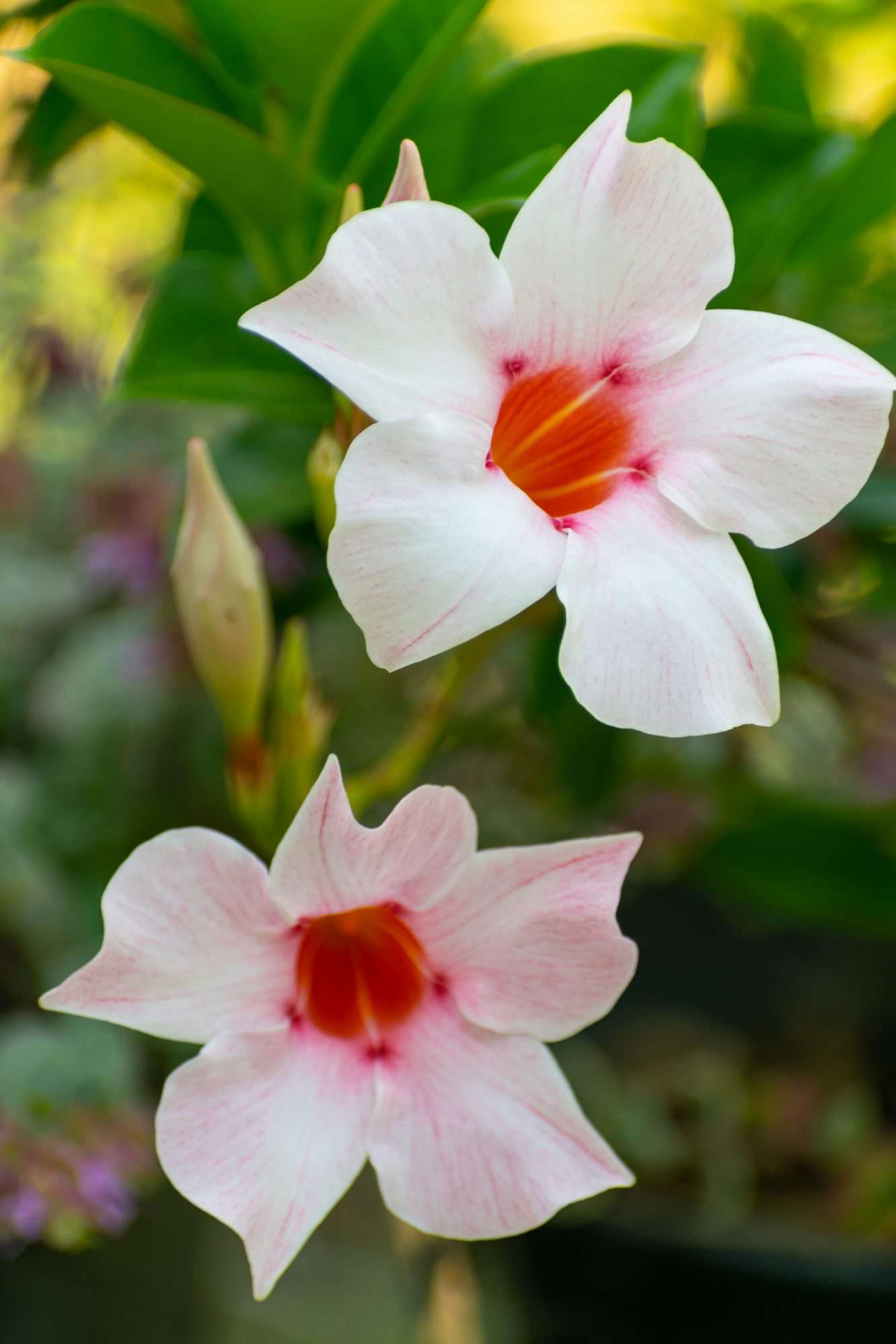
Soothing Sunlight and Temperature
Dipladenia, like a sunbather on a tropical beach, thrives when basking in the warmth of sunlight. It flourishes in temperatures ranging from 65-80°F (18-27°C). This means it’s ideal for gardens in regions with a Mediterranean or tropical climate. However, it’s crucial to protect your Dipladenia from the harsh rays of the afternoon sun, which can scorch its delicate foliage. Providing filtered shade during the hottest part of the day helps maintain its lush greenery and prevents sunburn.
This lush plant thrives when basking in the warmth of sunlight
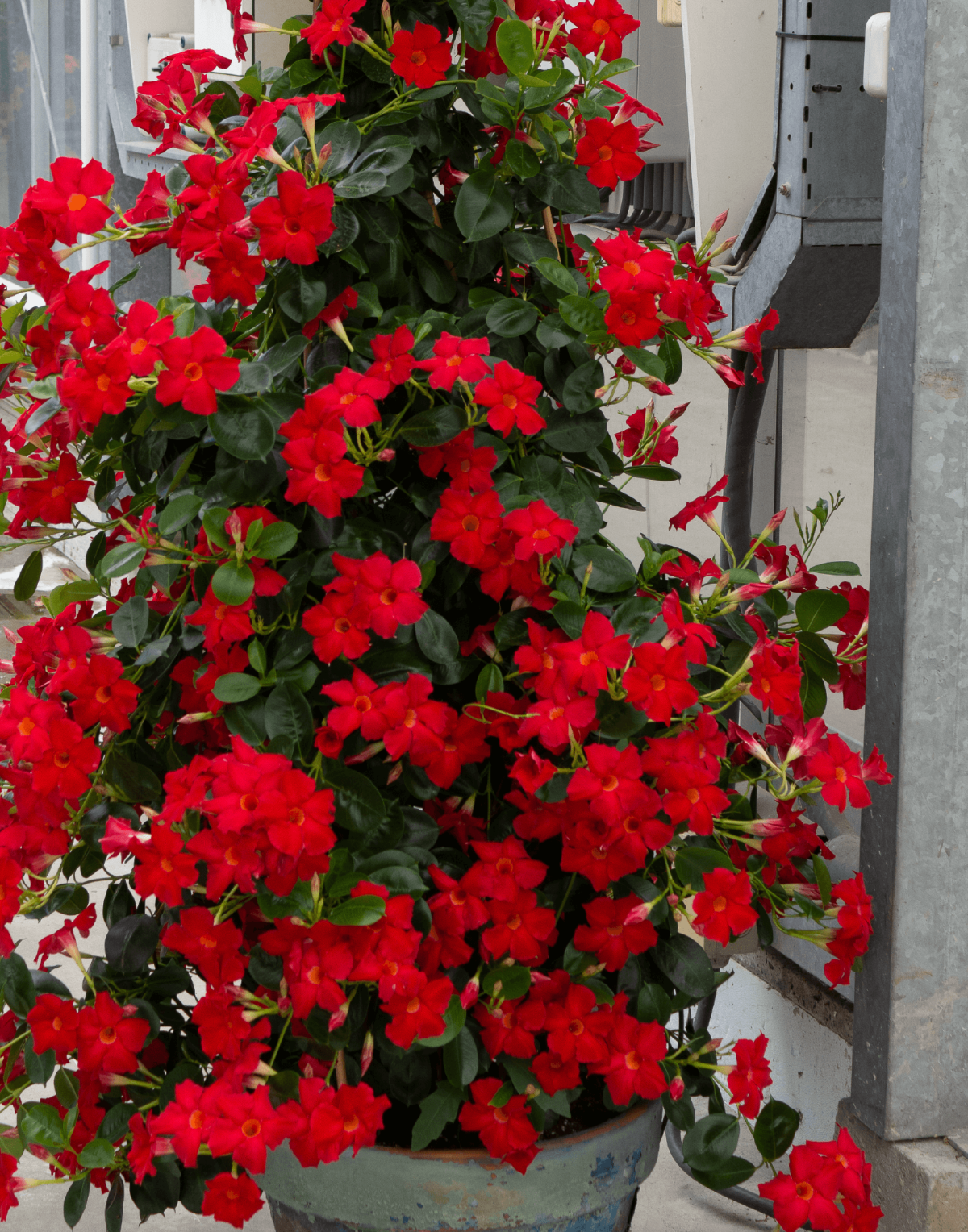
Pruning and Shaping
Pruning Dipladenia is an art form that imparts an elegant structure to your plant. Beyond its aesthetic appeal, regular pruning serves several essential purposes. It encourages new growth and promotes a bushier, more compact appearance. By removing spent flowers and leggy branches, you not only maintain a tidy and attractive appearance but also stimulate the plant to produce more blooms. Pruning also allows you to shape your Dipladenia to your desired form, whether it’s a cascading waterfall of blooms or a neatly trimmed bush.
Pruning encourages new growth and promotes a bushier, more compact appearance
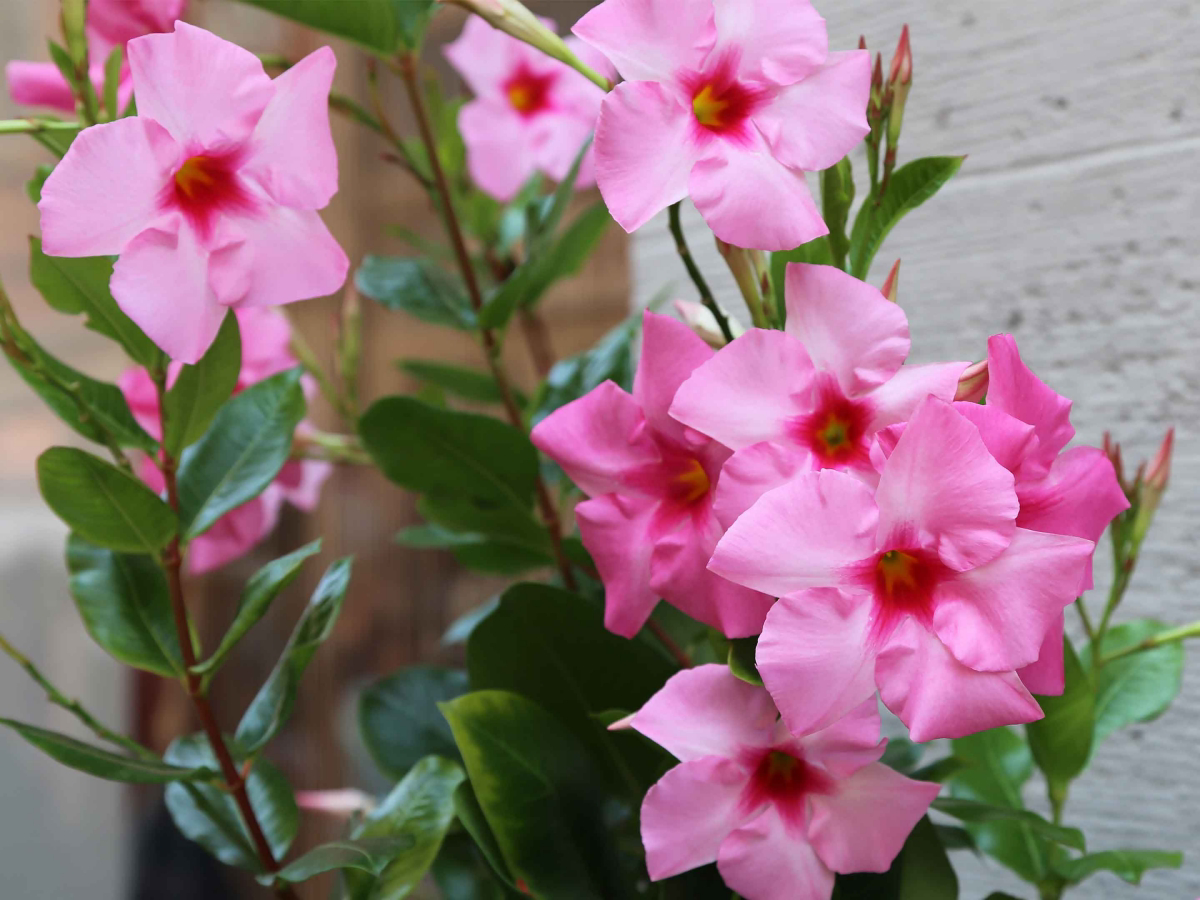
Common Pests and Diseases
Vigilance and Prevention
While Dipladenia is a resilient plant, it can still fall prey to common garden pests such as aphids and whiteflies. To ensure the health of your Dipladenia, it’s essential to remain vigilant and implement proactive pest prevention measures. Regularly inspect your plant for signs of infestations, including yellowing leaves or sticky residue on the foliage. If you spot any unwelcome visitors, consider using natural remedies like neem oil or insecticidal soap. These treatments are effective in combating garden pests while keeping your Dipladenia free from harmful chemicals.
Regularly inspect your plant for yellowing leaves or sticky residue on the foliage
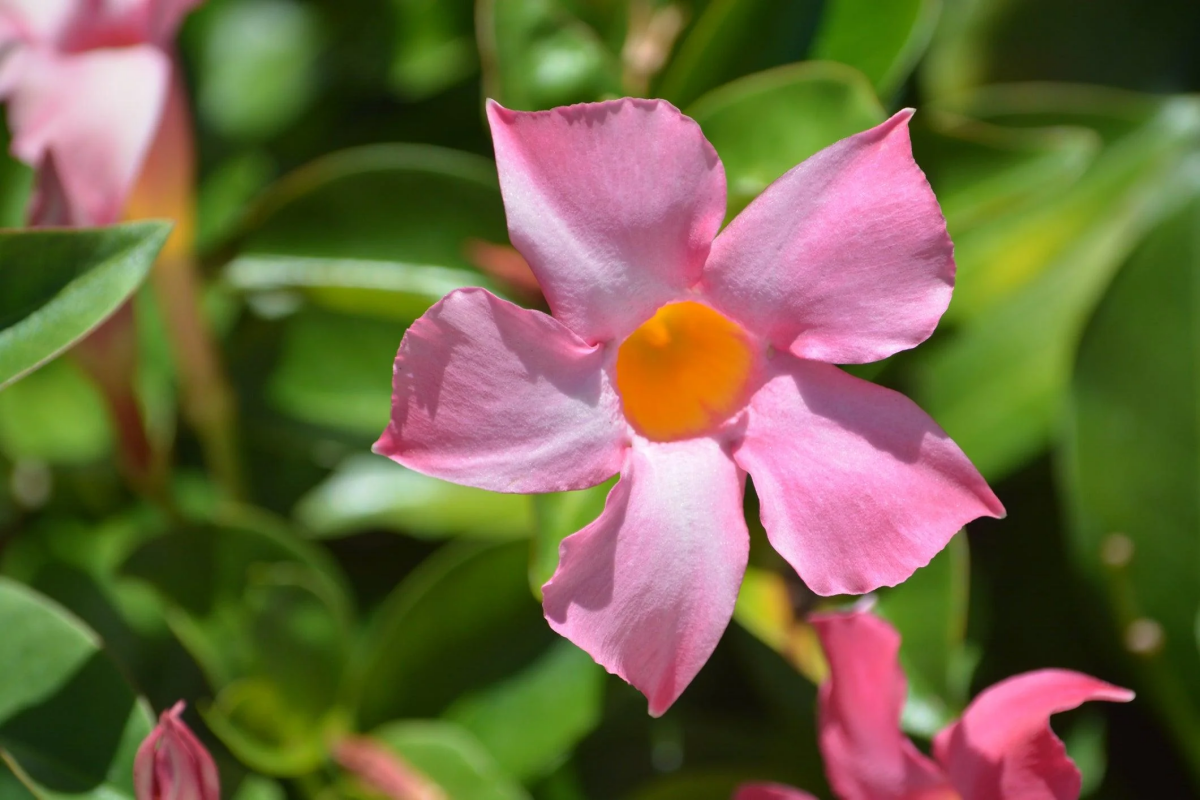
Dipladenia vs. Mandevilla: Key Differences
Distinguishing Features
Dipladenia and Mandevilla, two closely related plants, share numerous traits that make them a favorite among garden enthusiasts. However, discerning between the two can be valuable for making an informed choice for your garden. One key difference lies in the leaves; Dipladenia typically has oval, deep green leaves, while Mandevilla often features more elongated, narrower leaves. Additionally, Dipladenia tends to be more compact and bushier in growth habit, making it suitable for container gardening and smaller spaces. Mandevilla, on the other hand, often exhibits a more vigorous and vining growth pattern, ideal for trellises and vertical gardening. Understanding these nuances allows you to select the perfect plant for your specific gardening needs and preferences.
Dipladenia and Mandevilla share numerous traits that make them a favorite

Who Should Grow This Plant?
For Aspiring Garden Artists
Dipladenia is a dream come true for those with an artistic inclination in gardening. If you have an eye for beauty and a desire to create elegant, visually captivating landscapes, Dipladenia can be your artistic canvas. Its lush, trailing vines and captivating blooms offer endless possibilities for artistic expression. You can use Dipladenia to create stunning focal points, vibrant borders, or even cascading floral arrangements. Its ability to adapt to various growing conditions and its diversity in colors and varieties make it a versatile tool in the hands of garden artists.
If you have an eye for beauty, Dipladenia can be your artistic canvas
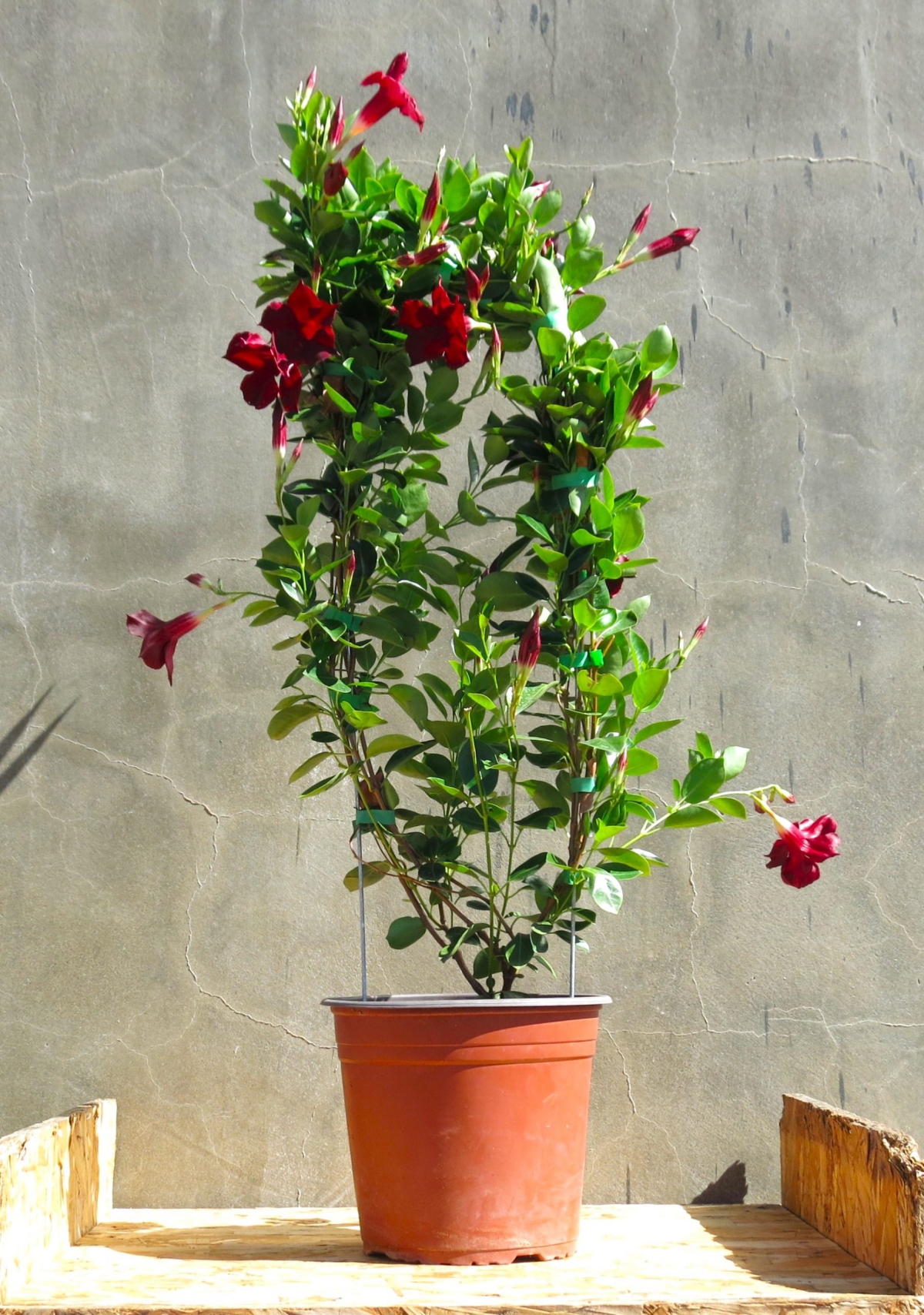
Garden Enthusiasts Seeking Low Maintenance
Whether you’re a seasoned gardener looking for a low-maintenance addition to your outdoor space or a novice eager to embark on your gardening journey, Dipladenia is a plant that welcomes both. Its resilience and relatively low-maintenance nature make it an excellent choice for individuals with varying levels of gardening experience. Dipladenia’s adaptability and ability to thrive with minimal fuss make it an attractive option for those who want to enjoy the rewards of a beautiful garden without the complexities of high-maintenance plants.
An excellent choice for individuals with varying levels of gardening experience
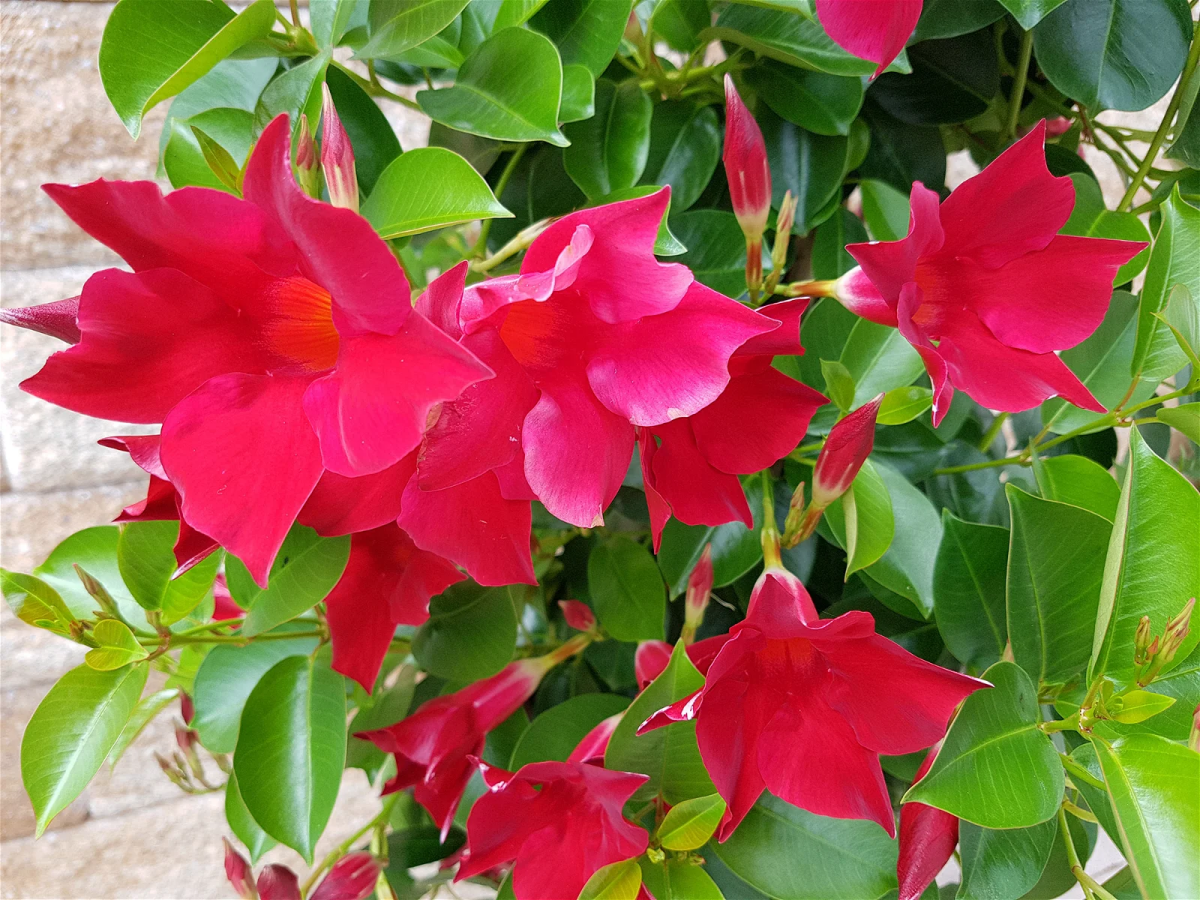
Benefits of Growing This Plant
Elevated Aesthetics
One of the most striking benefits of cultivating Dipladenia is its transformative effect on the aesthetics of any garden, patio, or balcony. The plant’s stunning blooms and lush foliage instantly elevate the visual appeal of your outdoor space. Its vibrant colors, whether they be shades of pink, red, white, or yellow, combined with its cascading vines, create a captivating and visually pleasing display. Dipladenia has the power to turn ordinary spaces into extraordinary outdoor sanctuaries that exude elegance and charm.
This plant can elevate the visual appeal of your outdoor space
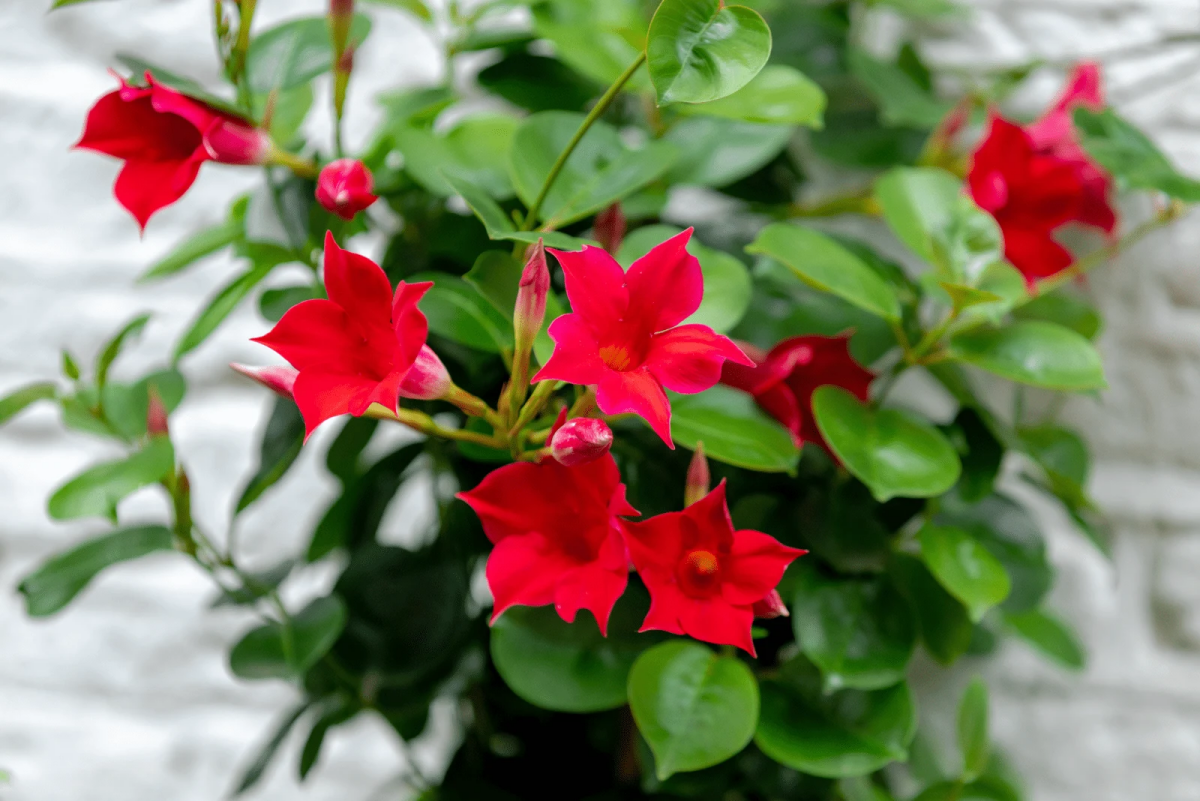
Attracts Pollinators
Gardening isn’t just about beauty; it’s also about fostering a healthy ecosystem. Dipladenia contributes to this by attracting essential pollinators like butterflies and hummingbirds. The nectar-rich flowers of Dipladenia act as a magnet for these beneficial creatures, enhancing the biodiversity of your garden. By planting Dipladenia, you not only enjoy its visual splendor but also actively participate in supporting local wildlife and maintaining a balanced and vibrant natural environment.
The flowers of Dipladenia act as a magnet for these beneficial creatures

Long-Lasting Blooms
Dipladenia is celebrated for its ability to provide months of continuous beauty and color to your garden. Its prolonged flowering period means you can revel in its blossoms for an extended time, adding an enduring source of joy to your outdoor space. Whether you’re hosting garden parties, enjoying peaceful moments on your patio, or simply taking in the serenity of your garden, Dipladenia’s long-lasting blooms ensure there’s always a touch of natural beauty to admire.
You can revel in its blossoms for an extended time
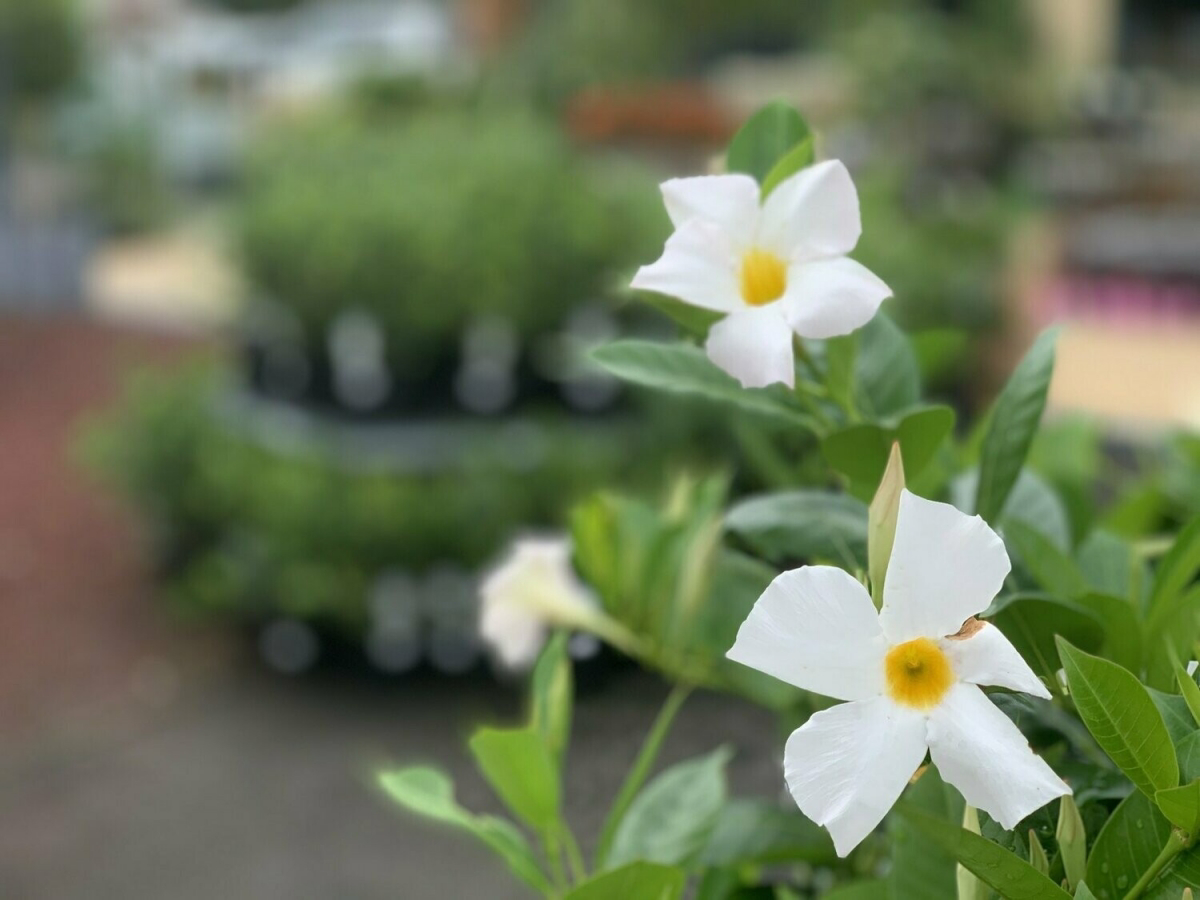
Who Should Avoid It?
Cold Climate Gardeners
Dipladenia’s preference for warmer temperatures and its sensitivity to cold makes it less suitable for gardeners in regions with harsh winters or frost-prone climates. If you reside in an area where temperatures regularly dip below their preferred range, you may find it challenging to keep Dipladenia thriving outdoors.
Not suitable for gardeners in regions with harsh winters or frost-prone climates
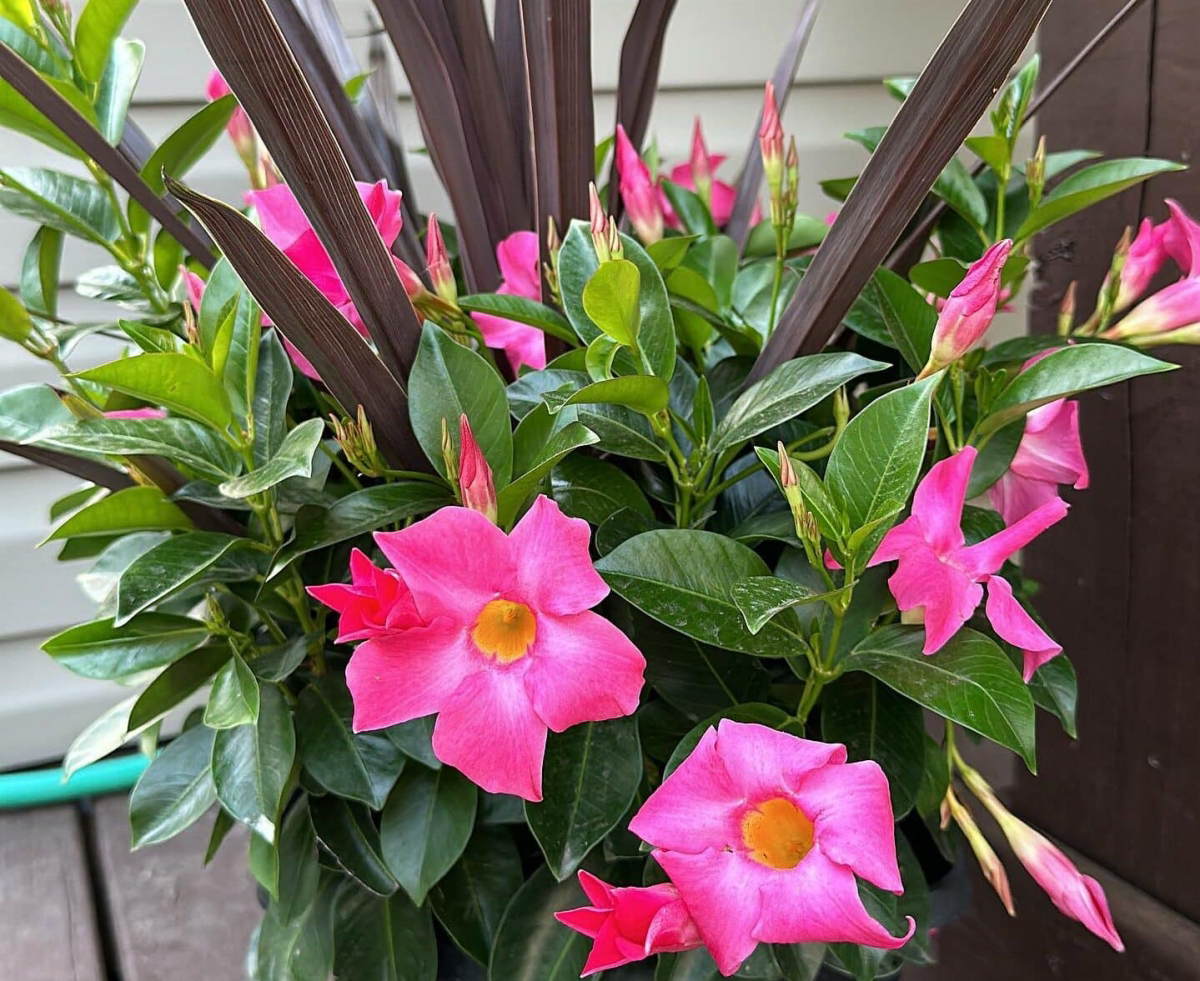
Pet Owners
While Dipladenia is not highly toxic to pets, it’s prudent for pet owners to exercise caution. Ingesting the plant may lead to mild gastrointestinal discomfort in pets. If you have curious or nibbling pets, it’s advisable to position Dipladenia in a location that’s out of their reach or to consider alternative plants that pose no risk to your furry companions.
Ingesting the plant may lead to mild gastrointestinal discomfort in pets
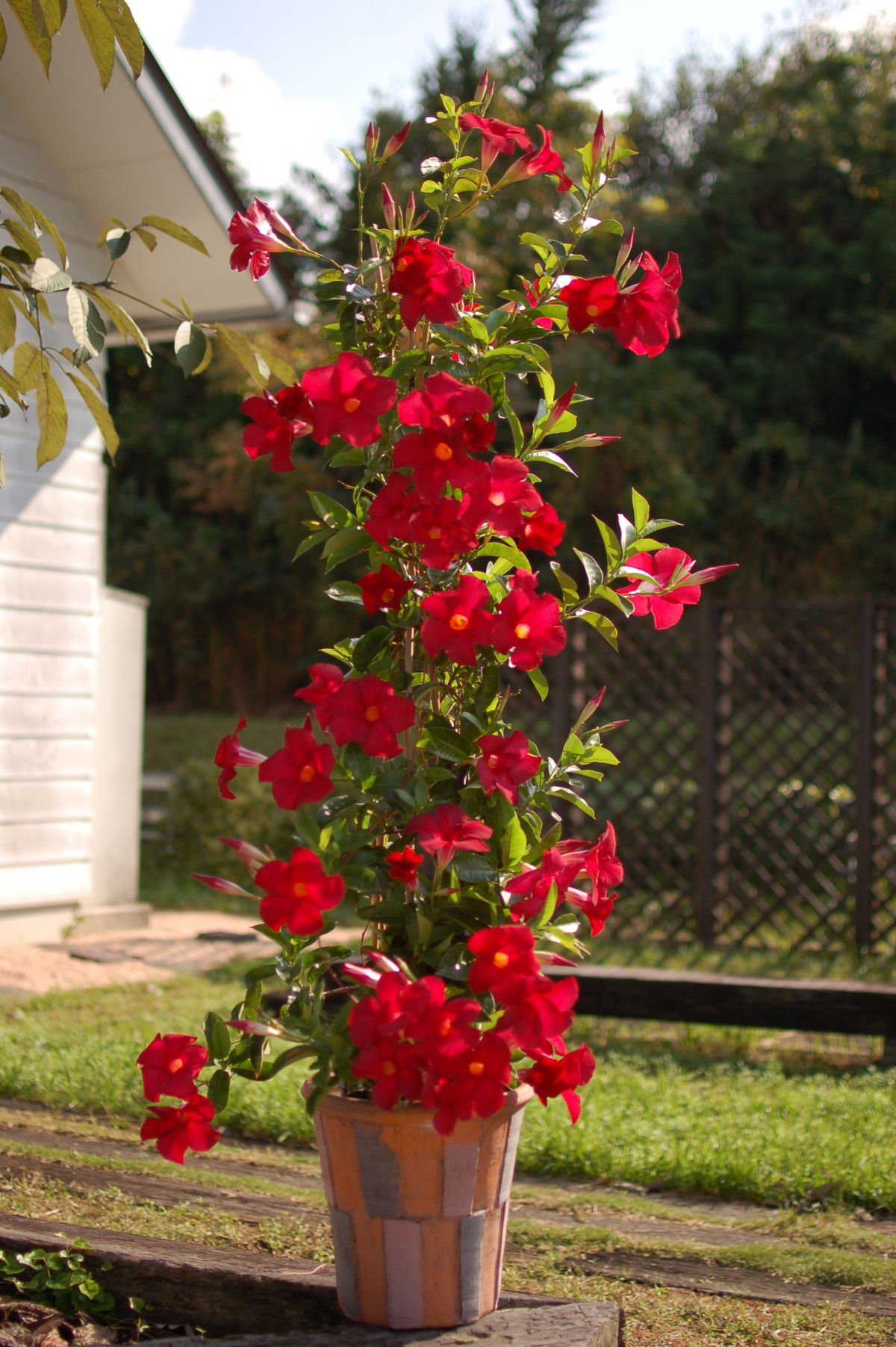
Conclusion
As we gracefully conclude our journey of exploration into the world of Dipladenia, it’s important to recognize that gardening is not merely a pastime; it’s an art form. It’s a canvas upon which we paint with nature’s colors, shapes, and fragrances. And within this art form, Dipladenia stands as a masterpiece—an embodiment of natural elegance that enchants and inspires. Embrace the joy that comes from caring for this floral gem. Watch as it transforms your garden, patio, or balcony into a sanctuary of beauty and tranquility. Let its vibrant colors and captivating fragrance lift your spirits and soothe your soul. In the presence of Dipladenia, the stresses of the world seem to fade away, replaced by the simple and profound beauty of nature. Just as Dipladenia has enchanted garden enthusiasts for generations, may it enchant you, filling your days with the timeless beauty of nature, and bringing a touch of elegance to the canvas of your garden.
Now you know how to grow and take care of this lush plant!
